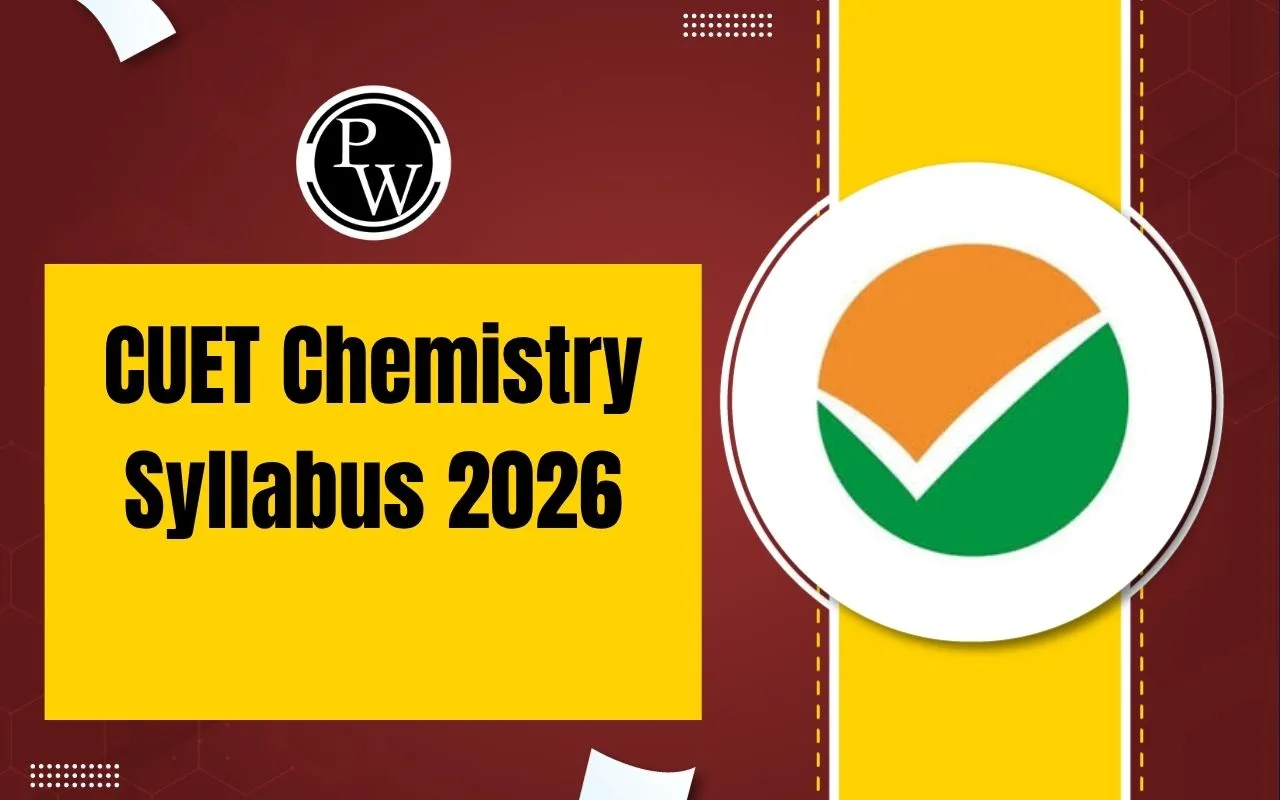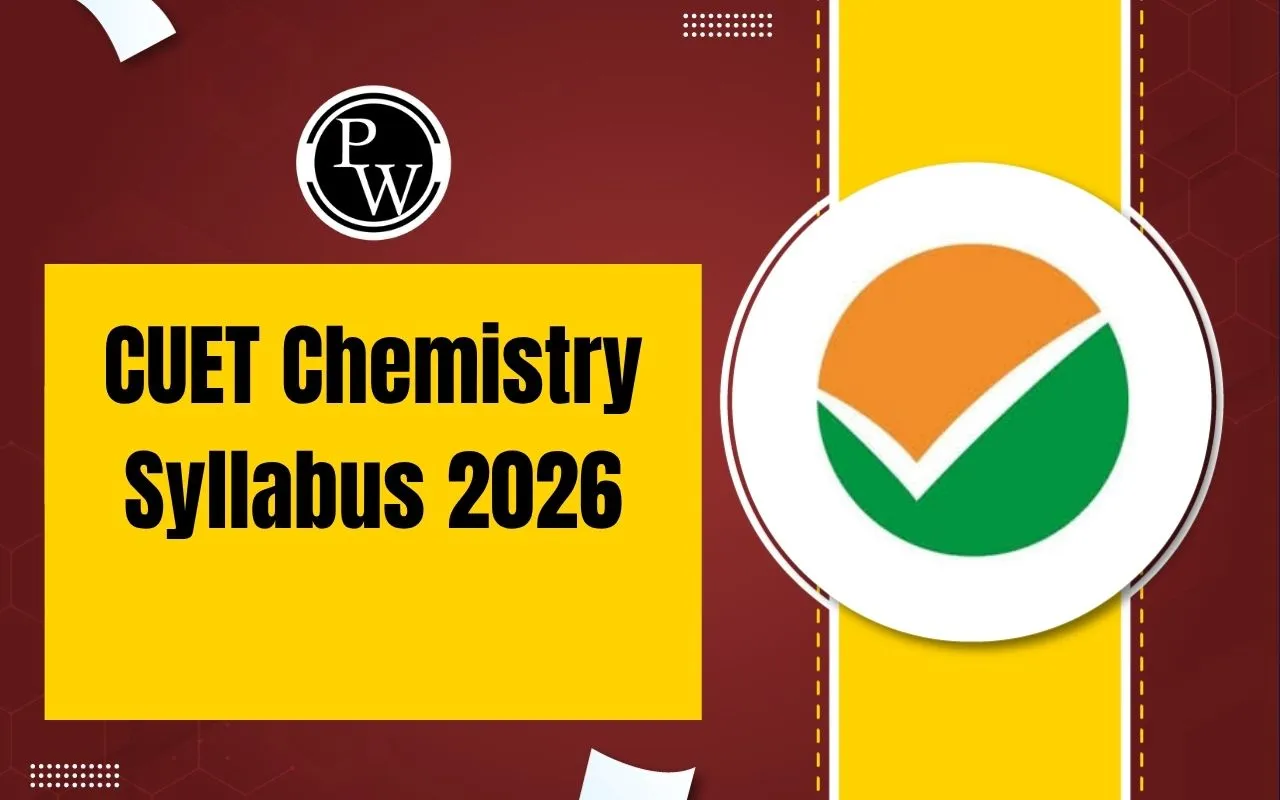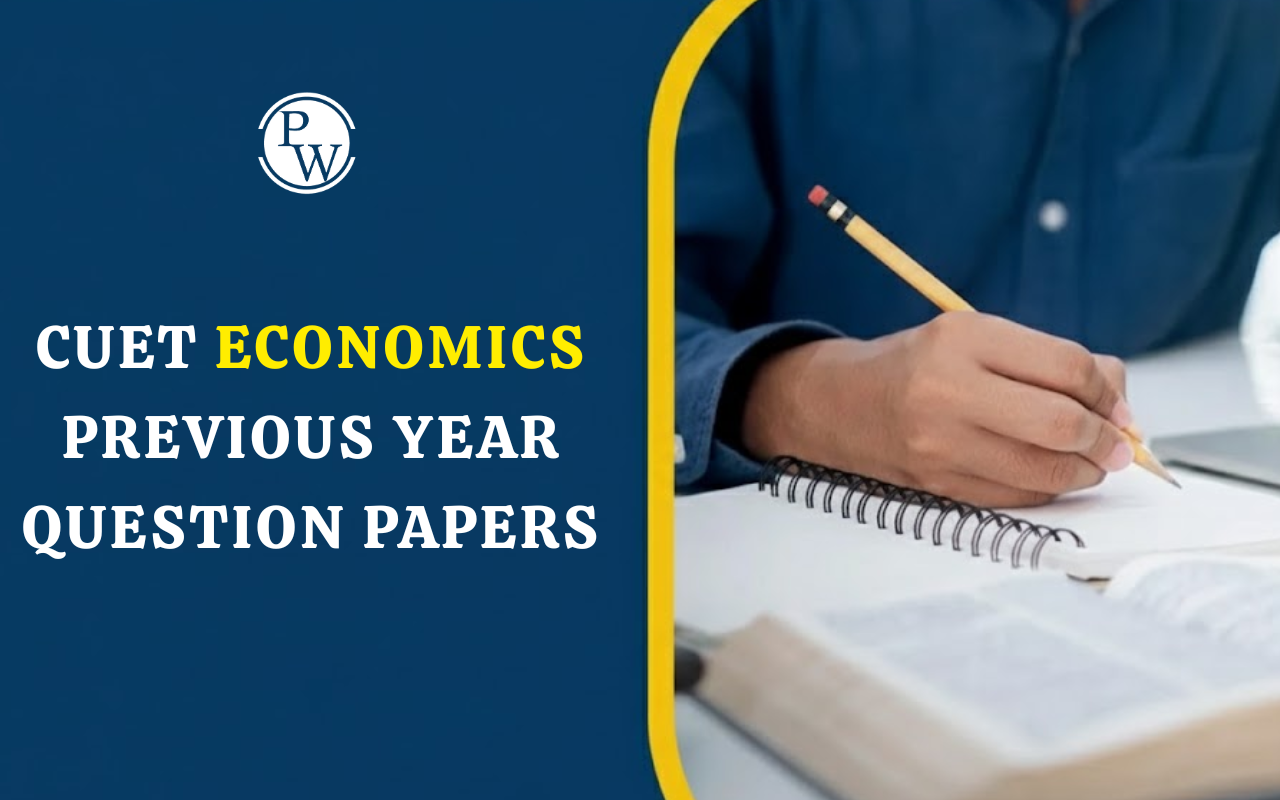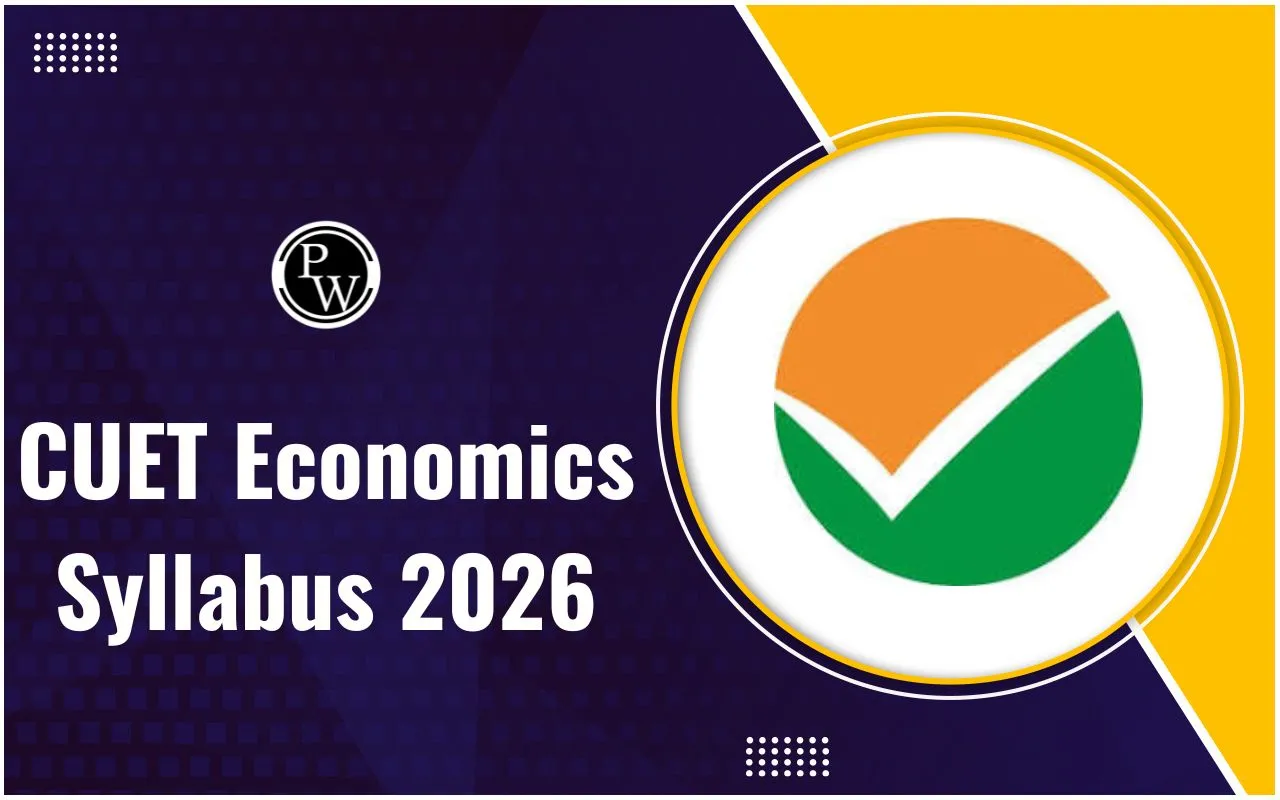

If you're planning to pursue undergraduate studies in Chemistry through the Common University Entrance Test (CUET), understanding the CUET Chemistry Syllabus 2026 is your first step toward success. The Chemistry syllabus for CUET UG is entirely based on the NCERT Class 12 curriculum and includes 10 essential units that cover core areas of Physical, Organic, and Inorganic Chemistry. These topics range from Solutions, Electrochemistry, and Chemical Kinetics to Haloalkanes, Coordination Compounds, and Biomolecules. A thorough understanding of the CUET Chemistry important topics will help you streamline your preparation, strengthen your conceptual clarity, and significantly enhance your chances of scoring well in the exam.
Also Check : CUET Syllabus 2026
CUET Chemistry Exam 2026 Highlights
Here are the key highlights of the CUET Chemistry Exam 2026 that every aspirant must know. This will help you understand the exam structure, focus on the right topics, and plan your preparation effectively.
|
CUET Chemistry Exam 2026 Highlights |
|
|
Aspect |
Details |
|
Exam Name |
CUET UG 2026 |
|
Subject |
Chemistry |
|
Conducting Body |
National Testing Agency (NTA) |
|
Eligibility |
Students from Science stream aspiring for UG in Chemistry or related fields |
|
Participating Universities |
Over 280 (Central, State, Deemed, and Private Universities) |
|
Section |
Domain-Specific Subject (Section II) |
|
Syllabus Base |
Entirely based on NCERT Class 12 Chemistry |
|
Number of Questions |
50 (All compulsory) |
|
Units Covered |
10 Units (Revised from earlier 16 units) |
|
Exam Mode |
Computer-Based Test (CBT) |
|
Question Type |
Multiple Choice Questions (MCQs) |
|
Difficulty Level |
Moderate – Lower than JEE/NEET but concept-based |
CUET UG Chemistry Syllabus 2026
Here is the unit-wise CUET Chemistry syllabus to help you structure your preparation more effectively.
Unit I: Solutions
-
Topics Covered:
-
Types of solutions
-
Concentration expressions (solids in liquids)
-
Solubility of gases in liquids
-
Raoult’s Law
-
Colligative properties:
-
Relative lowering of vapor pressure
-
Elevation of boiling point
-
Depression of freezing point
-
Osmotic pressure
-
Molecular mass determination via colligative properties
-
Abnormal molecular mass & Van’t Hoff factor
Unit II: Electrochemistry
-
Topics Covered:
-
Redox reactions
-
EMF of a cell
-
Standard electrode potential
-
Nernst equation & Gibbs free energy relation
-
Electrolytic conductance: Specific & molar conductivity, variation with concentration
-
Kohlrausch’s Law
-
Electrolysis & laws (basic concepts)
-
Galvanic cells, Dry cells, Lead accumulator, Fuel cells
-
Corrosion
Unit III: Chemical Kinetics
-
Topics Covered:
-
Average & instantaneous reaction rate
-
Factors: concentration, temperature, catalyst
-
Order & molecularity of reaction
-
Rate law & specific rate constant
-
Integrated rate laws (zero and first order), Half-life
-
Collision theory (basic)
-
Activation energy, Arrhenius equation
Unit IV: d- and f-Block Elements
-
Topics Covered:
-
Properties of first-row transition metals:
-
Electronic configuration, oxidation states, ionic radii
-
Catalytic/magnetic properties
-
Metallic character, color, alloy formation
-
K₂Cr₂O₇ & KMnO₄ – Preparation & properties
-
Lanthanoids: Oxidation states, lanthanoid contraction
-
Actinoids: Comparison with lanthanoids
Unit V: Coordination Compounds
-
Topics Covered:
-
Basics: Ligands, coordination number, color, magnetic properties
-
IUPAC nomenclature
-
Werner’s theory, VBT, CFT
-
Isomerism – Structural & Stereo
-
Applications: Biological systems, metal extraction
Unit VI: Haloalkanes & Haloarenes
-
Topics Covered:
-
Nomenclature, C-X bond nature
-
Physical & chemical properties
-
Substitution reactions, optical rotation
-
Haloarenes: Directive influence in mono-substituted compounds
-
Uses & environmental concerns: DDT, chloroform, freons, etc.
Unit VII: Alcohols, Phenols & Ethers
-
Alcohols:
-
Nomenclature, synthesis, properties, dehydration mechanism
-
Identification of 1°, 2°, 3° alcohols
-
Uses: Methanol, ethanol
-
Phenols:
-
Preparation, acidity, electrophilic substitution
-
Uses
-
Ethers:
-
Preparation, properties, uses
Unit VIII: Aldehydes, Ketones & Carboxylic Acids
-
Aldehydes & Ketones:
-
Nomenclature, carbonyl group nature
-
Preparation, properties, nucleophilic addition mechanism
-
α-Hydrogen reactivity, uses
-
Carboxylic Acids:
-
Acidity, preparation, properties, uses
Unit IX: Amines
-
Topics Covered:
-
Nomenclature, classification, structure
-
Preparation, properties, identification (1°, 2°, 3°)
-
Diazonium salts: Preparation, reactions, uses
Unit X: Biomolecules
-
Carbohydrates:
-
Monosaccharides (glucose, fructose), D-L configuration
-
Oligo- & Polysaccharides (starch, cellulose, glycogen)
-
Proteins:
-
Amino acids, peptide bond, levels of protein structure
-
Denaturation, enzymes
-
Others:
-
Vitamins – classification & function
-
Hormones – basic idea
-
Nucleic acids – DNA & RNA
Also Check : CUET Exam Pattern 2026
CUET Chemistry Chapter Wise Weightage
Here is the CUET 2026 Chemistry Chapter-Wise Weightage based on recent trends and syllabus guidelines. While the exact number of questions can vary slightly, this estimation can help you focus on the most important chapters for scoring high in the Chemistry section of CUET UG 2026.
|
CUET 2026 Chemistry Chapter-Wise Weightage (Expected) |
||
|
Section |
Chapter Name |
Expected Number of Questions |
|
Organic Chemistry |
Haloalkanes and Haloarenes |
3–4 |
|
Aldehydes, Ketones, and Carboxylic Acids |
4–5 |
|
|
Alcohols, Phenols, and Ethers |
3–4 |
|
|
Biomolecules |
2–3 |
|
|
Amines |
3–5 |
|
|
Polymers (if included by university) |
1–2 |
|
|
Chemistry in Everyday Life (if included) |
1–2 |
|
|
Inorganic Chemistry |
General Principles of Metallurgy |
1–2 |
|
d- and f-Block Elements |
2–3 |
|
|
p-Block Elements |
4–5 |
|
|
Coordination Compounds |
3–4 |
|
|
Physical Chemistry |
Solid State (if included) |
2–3 |
|
Electrochemistry |
2–3 |
|
|
Solutions |
2–3 |
|
|
Surface Chemistry |
4–5 |
|
|
Chemical Kinetics |
3–4 |
|
CUET Chemistry Exam Pattern and Marking Scheme
Here's the CUET Exam Pattern for Chemistry and Marking Scheme for 2026 to help you clearly understand how the exam will be structured:
|
CUET Chemistry Exam Pattern and Marking Scheme |
|
|
Particulars |
Details |
|
Subject |
Chemistry (Domain-Specific Subject) |
|
Total Questions |
50 |
|
Questions to Attempt |
40 |
|
Question Type |
Objective Type (Multiple Choice Questions - MCQs) |
|
Marking Scheme |
+5 for each correct answer |
|
Negative Marking |
-1 for each incorrect answer |
|
Unattempted Questions |
0 marks |
|
Exam Duration |
45 Minutes |
|
Syllabus Source |
Based on 12 NCERT Chemistry |
CUET Chemistry Important topics
Here are the important topics for CUET Chemistry 2026 that students should prioritize during their preparation. These topics are selected based on previous exam trends and their high weightage in the question paper.
|
CUET Chemistry Important topics |
||
|
S. No. |
Topic Name |
Subtopics/Key Concepts |
|
1 |
Solutions |
Types of solutions, Raoult’s Law, colligative properties, Van’t Hoff factor, abnormal molecular mass |
|
2 |
d- and f-Block Elements |
Transition metal trends, KMnO₄ & K₂Cr₂O₇ prep & properties, lanthanoid contraction, oxidation states |
|
3 |
Haloalkanes and Haloarenes |
Nomenclature, C–X bond nature, substitution reactions, optical rotation, directive influence in haloarenes |
|
4 |
Alcohols, Phenols, and Ethers |
Prep & properties, dehydration, acidity of phenol, electrophilic substitution, ether prep & uses |
|
5 |
Aldehydes, Ketones & Carboxylic Acids |
Nomenclature, prep, nucleophilic addition, alpha hydrogen reactivity, acidic nature, chemical properties |
|
6 |
Amines |
Structure, classification, prep, chemical properties, identification, diazonium salts |
|
7 |
Biomolecules |
Carbohydrates (mono-, di-, poly-), proteins, enzymes, vitamins, DNA & RNA |
|
8 |
Electrochemistry |
Redox reactions, EMF, Nernst Equation, conductance, electrolysis, Galvanic cells, fuel cells, corrosion |
|
9 |
Chemical Kinetics |
Rate of reaction, order, molecularity, rate law, half-life, Arrhenius equation, activation energy |
|
10 |
Coordination Compounds |
Ligands, IUPAC naming, VBT, CFT, magnetic properties, isomerism, industrial & biological importance |
CUET Chemistry Syllabus PDF Download
Students preparing for CUET UG Chemistry can download the syllabus PDF from the link provided below for easy reference. Although the official CUET Chemistry syllabus for 2026 has not been released by the NTA, it is expected to remain largely similar to the 2025 syllabus. The PDF includes detailed unit-wise topics based on the NCERT Class 12 curriculum. Keeping a copy of the syllabus will help students stay focused and organize their study plan effectively throughout the preparation journey.
CUET Chemistry Syllabus PDF
CUET Chemistry Preparation Strategy
Here are some effective tips to prepare for CUET Chemistry:
-
Understand the Syllabus Thoroughly
-
Follow the NCERT Class 11 and 12 Chemistry syllabus.
-
Focus on the latest CUET 2025 pattern as 2026 is expected to be similar.
-
Divide the Syllabus
-
Split topics into Physical, Organic, and Inorganic Chemistry.
-
Prioritize high-weightage chapters (e.g., Aldehydes & Ketones, Chemical Kinetics).
-
Make a Realistic Study Plan
-
Create daily and weekly study goals.
-
Allocate more time to complex and formula-based topics.
-
Use NCERT Books as Primary Resource
-
Revise each concept from NCERT thoroughly.
-
Solve all in-text and end-of-chapter questions.
-
Practice MCQs Regularly
-
Attempt chapter-wise MCQs to strengthen conceptual clarity.
-
Practice assertion-reason and application-based questions.
-
Solve Previous Year Papers and Mock Tests
-
Take CUET mock tests to get exam-ready.
-
Analyze your performance and work on weak areas.
-
Revise Smartly
-
Make short notes, flashcards, and formula sheets.
-
Focus more on revision in the final month before the exam.
-
Time Management During Exam
-
Practice solving 50 questions in 1 hour.
-
Read each question carefully and avoid guesswork.
Physics Wallah provides CUET UG Online Coaching with live classes, study materials, and practice tests. The courses are designed to make learning simple and effective, helping you prepare for your CUET UG exams with ease.
|
CUET UG Exam Important Links |
|
CUET Chemistry Syllabus 2026 FAQs
Is the CUET Chemistry syllabus 2026 released by NTA?
What are the major topics included in the CUET Chemistry syllabus?
Is the CUET Chemistry syllabus NCERT-based?
How many questions are asked in the CUET Chemistry exam?













